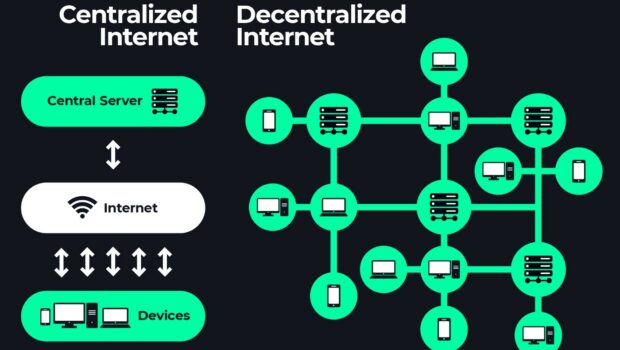Alternative internet. How real is it and is it needed?
Imagine that you have unlimited time and resources, as well as a developed algorithm that can be applied anywhere. All the technologies that exist, like https://servreality.com/technologies/ios-development/ can be used to create something huge. So, what do you want to create? The hero of the series “Silicon Valley” Richard Hendricks in one of the episodes replied that he would use his algorithm to create a new Internet. Hendricks explained his idea like this:
“I have a telescope. And one day I decided to watch the full moon. And I thought: wow, we landed on the moon when computers were no more capable of calculators. Now my phone is literally millions of times more powerful than those computers, and it just sits in my pocket, idle. And then I thought about the billions of phones around the world. And everything is just as powerful, and everything is in your pockets. And I thought, what if we combine these phones into a grandiose network. And most importantly, with my algorithm, data will be transferred so quickly that, if possible, you can create an absolutely decentralized version of the modern Internet – without firewalls, without tariffs, without government involvement, without surveillance. Information will become free in every sense of the word.”
Alternative internet as a protest against centralization
The prototype of the modern Internet was the Arpanet computer network, created back in 1969 by order of the US Department of Defense. The network brought together four scientific institutions whose specialists were involved in its development – the University of California at Los Angeles, the Stanford Research Center, the University of Utah, and the University of California at Santa Barbara. A network was created in case of war – to provide the country with a reliable data transmission system. It was a decentralized network – a system where information can be passed from one node to another until it reaches its destination.
Today, the Internet lives by the principles of centralization – when most of the information passes through the servers of large companies, for example, Google or Amazon. Such a system is bad and dangerous in that it creates a monopoly, makes it easier for world governments to obtain the information they need about users through pressure, and in general violates the very main principle of freedom of information.
So, in recent years, people began to talk more often about a return to the decentralization of the Internet and, in general, about the creation of an alternative Internet. Some talk about it as a joke, others – in a utopian vein, and still others imply a real future. According to experts from the same Silicon Valley (not cinematic, but real), the idea of a new generation of the Internet, free from the influence of corporations and the state, will gain momentum. And perhaps, in a few years, the alternative Internet will replace the familiar model of the World Wide Web. Experts believe that this will not happen out of anywhere, but as a reaction, at least in part, to data leak scandals. One of the most recent such examples is the story of Facebook when it became clear in March that data from 87 million users of the social network came to Cambridge Analytica, which used this information to predict the political preferences of voters during 2016 US presidential election.
Invisible internet anonymity and security
In fact, the alternative internet is not new at all. It already exists but in a different guise. For example, there is Tor, a well-known system of proxy servers that provides anonymous network connection, access to pages and sites. There is an I2P network – the so-called “invisible Internet” – an anonymous self-organizing distributed network that runs on top of the Internet. I2P allows you to safely browse the web, share files. Any user can run a server here, which will only be available within I2P. It turns out that this is such a closed platform. There are various decentralized blockchain platforms where databases are not stored in one place but on many separate devices.
In 2014, two Scots Nick Lambert and David Irwin created the SAFE network, the essence of which is to use the existing Internet, but not store data on the servers of Google, Yahoo, Facebook, or any other large Internet company. The developers proposed using a decentralized principle – everyone who joins the network had to turn their computer into a part of this network – the user must provide their hard drive to store encrypted data.
By design, SAFE protects users from hackers and government surveillance while remaining attractive to app developers and large companies. As Irwin noted, the SAFE network has a number of advantages: complete anonymity (third parties do not have the ability to eavesdrop), security (only users know passwords to decrypt data, and there is still no central server that makes a DDoS attack impossible), high performance (speed work within the network increases as the number of users increases), lack of censorship (the network does not use DNS – the system that controls site addresses).
The decentralized social network Diaspora had appeared four years earlier. Its servers (here they are called pods) are located in different parts of the world. The user selects any pod, registers in it, and freely communicates with people from other pods. Diaspora software is provided to users free of charge and is open source. This means that anyone can make changes to this code to make it work better.
Pavel Durov has recently thought about an alternative version of the Internet. Together with his brother Nikolai, they are developing the TON (Telegram Open Network) project – a network with hidden IP addresses that runs on top of the regular Internet. This network will include cryptocurrency and a payment system on the blockchain, a messenger for messaging Telegram, a virtual passport (Telegram Passport), decentralized storage for files, and its own search system.
What sets TON apart is that it cannot be blocked by conventional technical means, and therefore cannot be controlled by Internet regulators. The Telegram Passport concept assumes that only the service that verifies the accuracy of personal information will have access to the user’s personal data. However, according to some experts, such a scheme will not be possible in some countries until those countries simplifies the procedure for cross-border transfer of personal data.
Internet creator Tim Berners-Lee believes that the future belongs to decentralized systems. People are already tired of the fact that they can no longer control the security of their data. And such systems, including Berners-Lee’s Solid project (a tool for creating decentralized applications), are becoming more mature.
Cover Image Credits: UXPlanet












